Disputes over access to freshwater are becoming increasingly common in international relations. In Darfur, competition for water resources was one of the factors that helped spark a civil war. In the Nile Basin, Ethiopia’s construction of a hydroelectric dam triggered years of confrontation with Egypt and Sudan. In Central Asia, reduced river flow has led to transportation bottlenecks and growing interstate tensions. In Ukraine, the destruction of the Kakhovka Dam in 2023 disrupted water supplies for hundreds of thousands and once again turned water infrastructure into a target of war.
Against this backdrop, India’s 2025 suspension of the Indus Waters Treaty stands out. Signed in 1960, it was one of the world’s oldest cross-border agreements and had survived decades of armed and political conflict. Long regarded as a model for sustainable water dispute resolution, its suspension signals not only escalating tensions between India and Pakistan, but also a broader crisis in global water governance—driven by climate change and surging demand.
Since the partition of British India, the question of water has been an inseparable part of the conflict between the two nations. Yet in this tense context, a rare precedent emerged in 1960—India and Pakistan agreed to divide the Indus River system and committed to upholding the deal even in times of war.
Despite decades of hostility, border clashes, and full-scale wars, India and Pakistan consistently honored the Indus Waters Treaty signed in 1960. It remains a rare exception to the rule—a model of durable cooperation between two nuclear powers that otherwise tend to confront rather than collaborate.
The issue of water distribution surfaced immediately after the 1947 partition of British India. Most of the rivers feeding the subcontinent originate on Indian territory, leaving downstream Pakistan in a vulnerable position. This was especially alarming amid growing enmity between the two newly formed states.
According to Hassan Khan, an expert in environmental policy and urban studies at Tufts University, the greatest tension surrounded control of the irrigation system in Punjab—a key agricultural region split by the border. "It wasn’t easy for young states to agree on who should manage a water source on which millions of lives depended," he explains.
After nearly a decade of negotiations brokered by the World Bank, Indian Prime Minister Jawaharlal Nehru and Pakistani President Muhammad Ayub Khan signed the treaty in September 1960. Under the agreement, the three eastern rivers—Sutlej, Beas, and Ravi—were allocated to India, while the three western rivers—Jhelum, Chenab, and the Indus itself—were assigned to Pakistan.
Although all six rivers originate in India, New Delhi pledged not to interfere with the natural flow of water toward Pakistan. That commitment remains in effect to this day—despite the long-standing territorial dispute over Kashmir.
The Construction of the Baglihar Dam Was the First Major Test of the Water Treaty—and Turned the River Into an Arena of Diplomatic and Legal Struggle. After the 2016 Uri Attack, Water Became a Tool of Pressure in India’s Foreign Policy Rhetoric
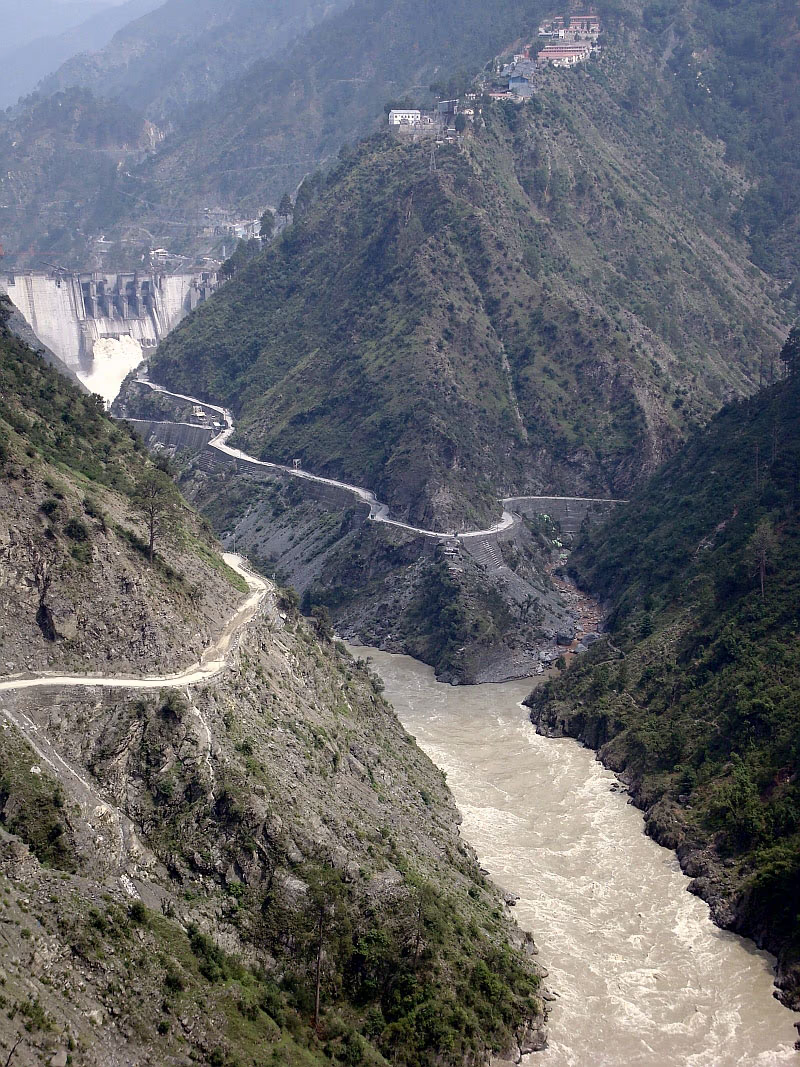
The Baglihar Hydroelectric Plant on the Chenab River, Indian Kashmir. The construction of this dam in the early 2000s prompted Pakistan to invoke arbitration under the Indus Waters Treaty for the first time, arguing that the project violated the agreement’s terms.
The first serious challenge to the Indus Waters Treaty emerged in the late 1990s, when India announced plans to build the Baglihar Hydroelectric Plant on the Chenab River—in the part of Kashmir under its control. Islamabad claimed the project violated the treaty’s terms: despite Indian jurisdiction, the river belonged to Pakistan’s allocated share of the basin.
In 1999, after construction began, Pakistan requested arbitration from the World Bank—the same institution that had originally brokered the treaty. An independent expert rejected most of Pakistan’s complaints, and the dam was commissioned in 2007.
This set a precedent. "Pakistan’s position is that any dam construction by India violates its obligation to allow the free flow of water," says Ahmed Rafay, an expert in environmental law. "India, on the other hand, argues that any major restriction of flow would flood its own territory—making such a scenario unlikely."
The politicization of water reached a new level after the September 2016 attack on an Indian military base in Uri, Kashmir. India accused Pakistan of sponsoring militants from the group Jaish-e-Mohammed. Home Minister Rajnath Singh publicly called Pakistan a "terrorist state" and urged its global isolation. Prime Minister Narendra Modi added: "Blood and water cannot flow together."
That statement marked a turning point. Since then, New Delhi has begun viewing water leverage as a potential tool of pressure—even while formally adhering to the treaty.
The Killing of Indian Tourists Triggered the Formal Suspension of the Water Treaty. Modi Declared That Water "Will No Longer Flow to Pakistan"—And for the First Time, Delhi Renounced Commitments Long Deemed Untouchable
In the spring of 2025, the water issue ceased to be mere rhetoric. Following the death of Indian tourists in a terrorist attack—once again blamed by New Delhi on militants from the Pakistani side—India announced the suspension of the Indus Waters Treaty for the first time in 65 years.
Water Resources Minister Chandrakant Raghunath Patil promised that "not a single drop of Indus water will go to Pakistan." Prime Minister Modi went further: "From now on, Indian water will flow for India’s benefit, be preserved for India, and be used for India’s progress."
For Pakistan, the move was deeply alarming. More than 75% of its freshwater comes from cross-border sources—chiefly the Indus Basin. While the treaty’s suspension does not mean an immediate cutoff, the absence of legal constraints and information-sharing mechanisms leaves the country vulnerable to sudden discharges or droughts.
The climate crisis only amplifies the risks. In 2022, according to Germanwatch rankings, Pakistan was the world’s most climate-affected country. The winter of 2024–2025 was one of the driest on record, with rainfall 67% below average. Swings from devastating floods to prolonged droughts are becoming the new normal—destroying crops, accelerating migration, and intensifying urban water competition.
"With rapid urbanization, water supply systems are failing to keep pace with population growth," explains Hassan Khan. According to Daniel Hines of University College London, any major disruption in water flow threatens the food security of millions.
Still, as Indian officials point out, the treaty’s water allocation has long favored Pakistan, granting it roughly 80% of the Indus system. Political analyst Anuttama Banerjee notes that "the Indian government sees the treaty as outdated—no longer reflecting the demographic explosion, climate shocks, or shifting balance of power of the 21st century."
After the Treaty’s Suspension, Pakistan Was Thrown Into Complete Uncertainty. Rivers Suddenly Run Dry—Then Surge Without Warning, Causing Floods. No Coordination, No Forecasting, No Time to Respond. The Country Has Lost Not Just Water, But Predictability
The consequences of the suspension became apparent almost immediately. In late April 2025, authorities in Pakistan-administered Azad Kashmir declared a water emergency in the Hattian Bala district. The Jhelum River suddenly overflowed, damaging homes and crops. The suspected cause was an unannounced release of water from India’s Uri Dam—something that, under the treaty, had previously required advance notification.
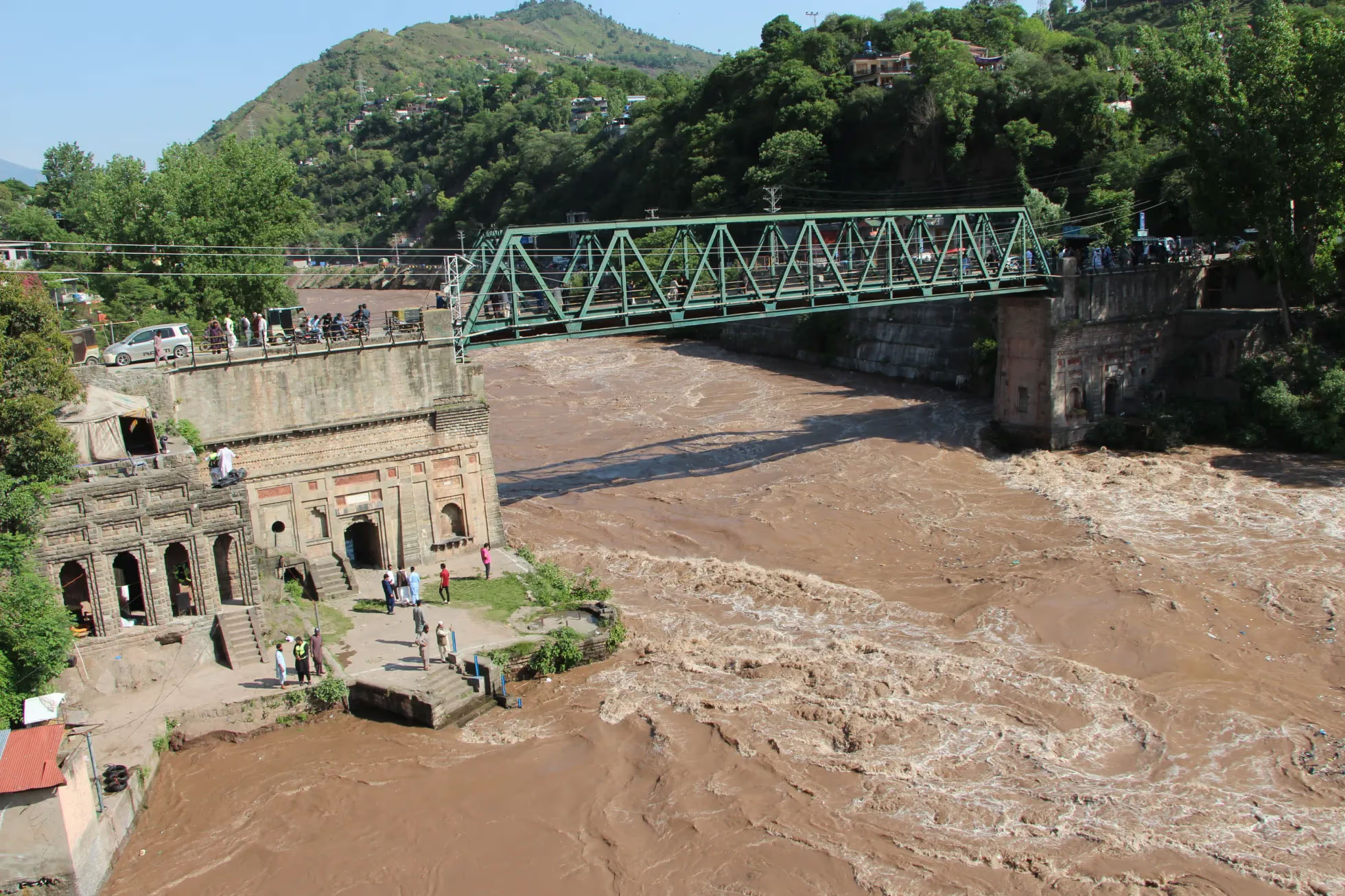
Water levels in the Jhelum River in Pakistani Kashmir rose after India released water on its side of the border. April 26, 2025.
Just a few days later, on May 5, the Indian outlet *The Free Press Journal* reported the opposite scenario: the Chenab River near Sialkot—a major agricultural and industrial hub in northern Pakistan—had nearly dried up. According to sources, the cause was the closure of sluice gates on the Indian side. The once-navigable river had become so shallow it could be crossed on foot.
On May 11, the situation again flipped 180 degrees: after heavy rains, India opened the sluice gates at the Salal and Baglihar dams, causing a sudden surge of water downstream and heightening the risk of flooding.
Pakistan sees such maneuvers as a form of political pressure. "This is India’s response to Pakistan’s support for terrorist groups," said Indian analyst Karan Vijay Sharma. "The suspension of the treaty is already yielding results. Indian authorities are not backing down."
Pakistani farmers are on the frontlines of this new configuration of pressure. "We’re afraid that India might either flood our fields or cut off water entirely," says Ali Haider Dogar, whose crops were destroyed by flooding in the summer of 2023 after a release from the Sutlej River. "Now that India has no obligation to share data on its actions, our entire season is at risk."
Mehebu Sahana, a geographer at the University of Manchester, notes that the cessation of hydrological data exchange is no less dangerous than physically cutting off the flow. Previously, the treaty required both parties to notify each other of floods, construction plans, and any changes in water management. Now, as Pakistani expert Nasir Memon emphasizes, this "creates the conditions for a humanitarian crisis, where millions could lose access to drinking water and livelihoods."
Technically, Delhi Lacks the Infrastructure to Halt the Flow Entirely. But Irregular Releases, Lack of Data Sharing, and the Element of Surprise Make the Pressure Real. Even Without War, Water Has Become a Tool of Coercion
Despite the harsh rhetoric, India currently lacks the infrastructure needed to completely block the water flows headed toward Pakistan. "To truly cut off the flow, you need not just political will but massive engineering capacity," explains Bhargabi Bhardwaj of the Environment and Society Research Centre at Chatham House. "At this point, India simply doesn’t have that."
Even partial control over the flow comes with trade-offs. The main rivers run through densely populated regions of India itself, and artificial redirection could trigger floods and damage within its own territory. Moreover, building new dams and reservoirs is a years- or even decades-long endeavor.
Yet total blockage is not the only scenario. Experts warn that irregular water releases, sudden shifts in flow, or lack of coordination can be just as disruptive.
"Even without large-scale infrastructure, India can manipulate flow patterns," says Hassan Khan. "One day it releases more water, the next—less. These fluctuations destabilize agriculture and create risks of both floods and droughts."
Himanshu Thakkar, coordinator of the South Asia Network on Dams, Rivers and People, believes short-term consequences are unlikely to be dramatic. "In the coming months, we may not see radical shifts," he notes. "But in the long run, if India decides to rethink its water architecture, the game could change. And that would take years, not months."
As a result, Pakistan finds itself in a zone of strategic uncertainty. The threat of pressure is real, but its scope remains unclear. And with transparency and mutual obligations gone, water policy is becoming increasingly unpredictable.
Water Conflicts Have Long Transcended South Asia. From Ethiopia and Egypt to Central Asia and Ukraine, Freshwater Has Become a Source of Instability, a Driver of Military Decisions, and a Pretext for Threats. The World Is Entering an Era Where Borders Run Not Only Across Land, But Along Rivers
The India–Pakistan standoff is just one of many examples of how freshwater is turning into a geopolitical resource. If the 20th century was defined by the battle over oil, the 21st is increasingly marked by struggles over rivers that pay no heed to national borders.
Back in 1995, World Bank Vice President Ismail Serageldin warned: "If the wars of this century were fought over oil, the wars of the next century will be fought over water." Three decades later, his prediction is taking on an ever more tangible form.
According to the Pacific Institute, which tracks conflicts driven by environmental stress, more than 1,600 incidents linked directly or indirectly to water disputes have occurred since the start of the 21st century. The key driver: a growing mismatch between water consumption and resource availability. In the 20th century, global demand for freshwater grew twice as fast as the human population.
This pattern is particularly evident in the Middle East and Africa. Ethiopia’s construction of a dam on the Blue Nile has raised alarm in Egypt and Sudan—countries that depend on the river for more than 90% of their freshwater supply. Since 2021, tensions have escalated to the point that Egypt and Sudan held joint military exercises dubbed "Guardians of the Nile"—a clear signal that water is now viewed as a national security issue.
"For Ethiopia, the priority is to fill the dam as quickly as possible," explains Anton Earle of the Stockholm International Water Institute. "But that could trigger droughts in Egypt and Sudan." Talks on a cooperative operating framework for the dam have since stalled.
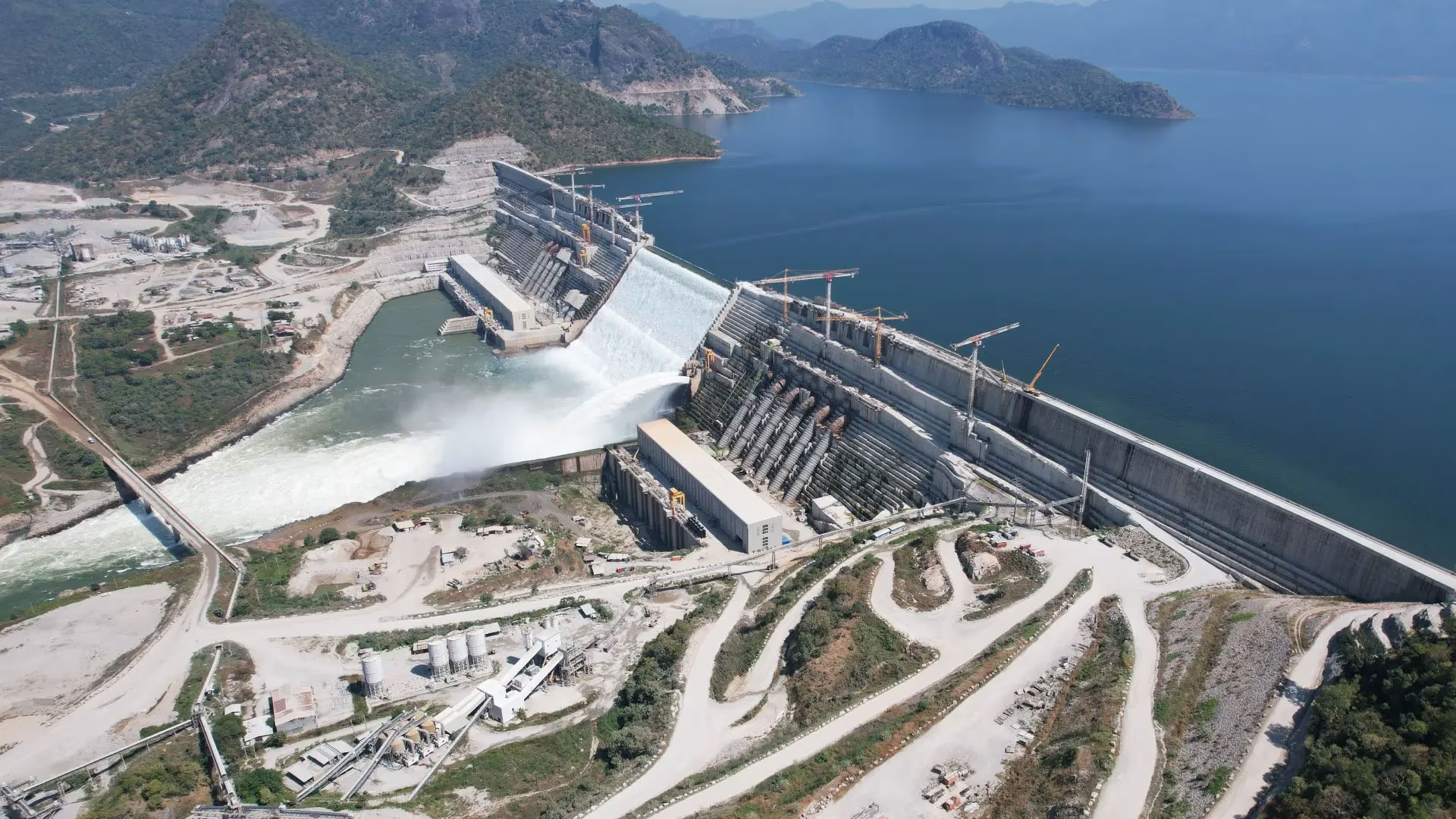
The Grand Ethiopian Renaissance Dam (GERD) on the Blue Nile is Ethiopia’s largest hydropower project—and the source of Cairo and Khartoum’s fears over reduced downstream flow.
Central Asia is also running short on water. In 2023, Kyrgyzstan halted water deliveries to Kazakhstan, citing drought. The move triggered transport blockades at the border and a chill in diplomatic relations. Officially, it was about water supply. In reality, it was a struggle over vital resources.
Even the war in Ukraine has had a water dimension. After Russia annexed Crimea in 2014, Ukraine cut off the North Crimean Canal, depriving the peninsula of its main water source. Russia restored the flow in 2022, shortly after launching its full-scale invasion. But the destruction of the Kakhovka Dam in 2023 once again left Crimea at risk of drought. According to the UN, water access was disrupted for 700,000 people.
According to the Joint Research Centre of the European Commission, potential hotspots for future water conflicts include not only the Indus and Nile, but also the Ganges Delta (India and Bangladesh), the Tigris–Euphrates Basin (Turkey, Syria, Iraq), and the Colorado River, shared by the US and Mexico.
Researchers warn that within the next 50 to 100 years, the likelihood of water-related conflicts could rise to 75–95%. In a world of unstable climate and contested river boundaries, water is becoming the new oil—and potentially, the next cause of war.
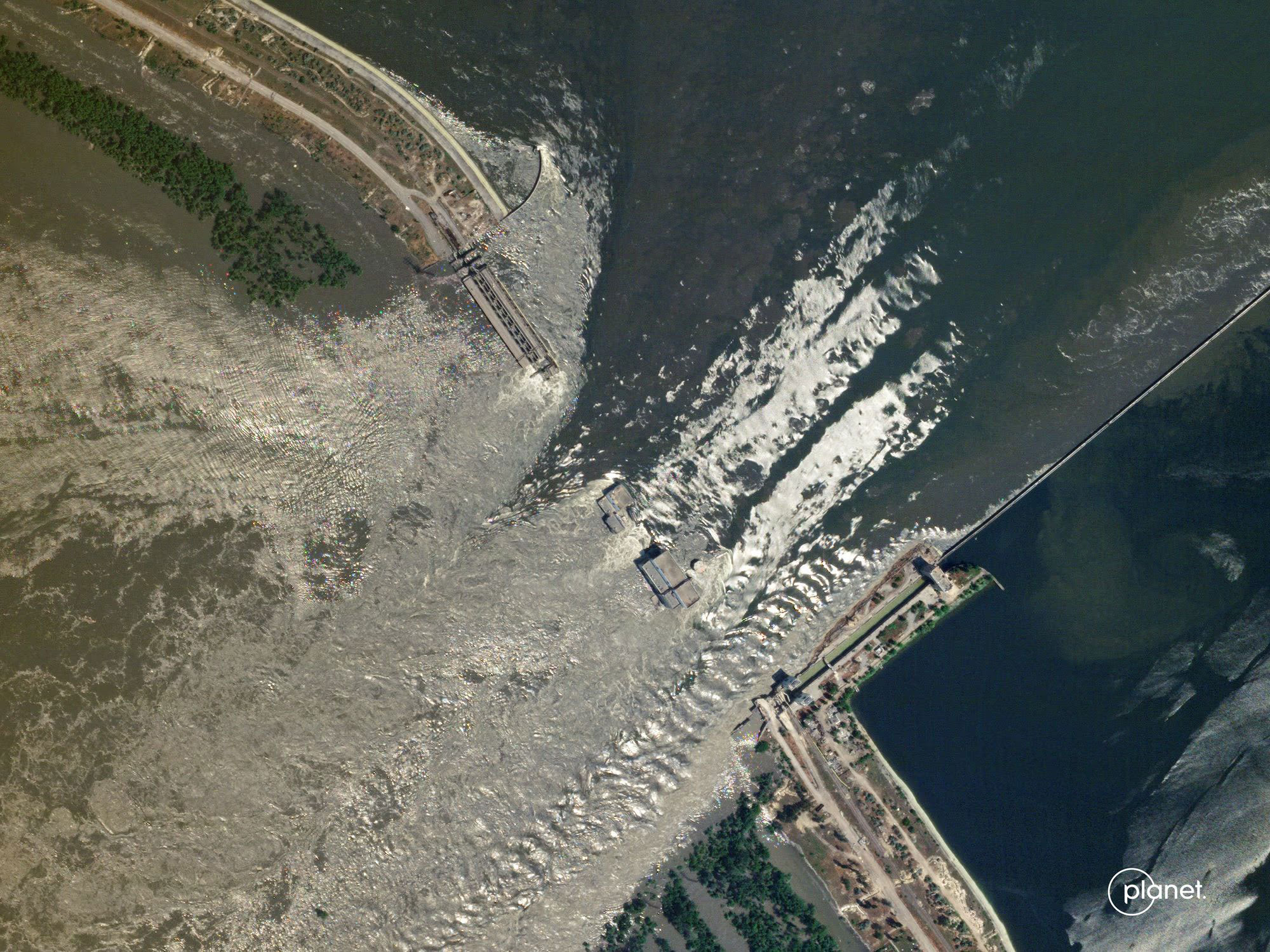
The destroyed Kakhovka Dam in southern Ukraine. The demolition of the structure drained the Kakhovka Reservoir and left around 700,000 people without reliable access to water—vividly illustrating how water infrastructure has become a target in modern warfare. June 2023.
Most Cross-Border Water Agreements Today Were Drafted in the Mid-20th Century—Long Before Climate Chaos and Demographic Overload. Without New Global Mechanisms, Rivers Will Become the Next Battleground. The Indus Treaty Is Not a Model—It’s a Warning
The growing number of transboundary water disputes is undermining not just local stability, but the very concept of international norms in an age of climate volatility. Unlike oil—which can be traded, substituted, or stockpiled—water is irreplaceable and beyond the logic of global markets. Its allocation depends on treaties that are 50 to 70 years old and increasingly out of sync with the demographic, climatic, and political realities of the 21st century.
The system built in the mid-20th century is coming apart at the seams. It fails to account for new sources of risk—from infrastructure collapse to terrorist attacks on dams, from sudden droughts to "hydropolitical" decisions by leaders seeking domestic legitimacy through tough rhetoric abroad.
Preventing a global water conflict will require a rethinking of transboundary governance: the creation of transparent, multilateral mechanisms for data sharing, independent arbitration, and collective climate response. Such institutions must be functional—not just declarative—or else water will cease to be a shared resource and become a means of coercion.
Long held up as a model of "fragile peace," the Indus Waters Treaty now reads more like a warning. The world is entering an era in which climate and geopolitics will flow in the same direction. And if states don’t learn to negotiate in advance, they will be forced to do so afterward—against the backdrop of disaster.
India and Pakistan
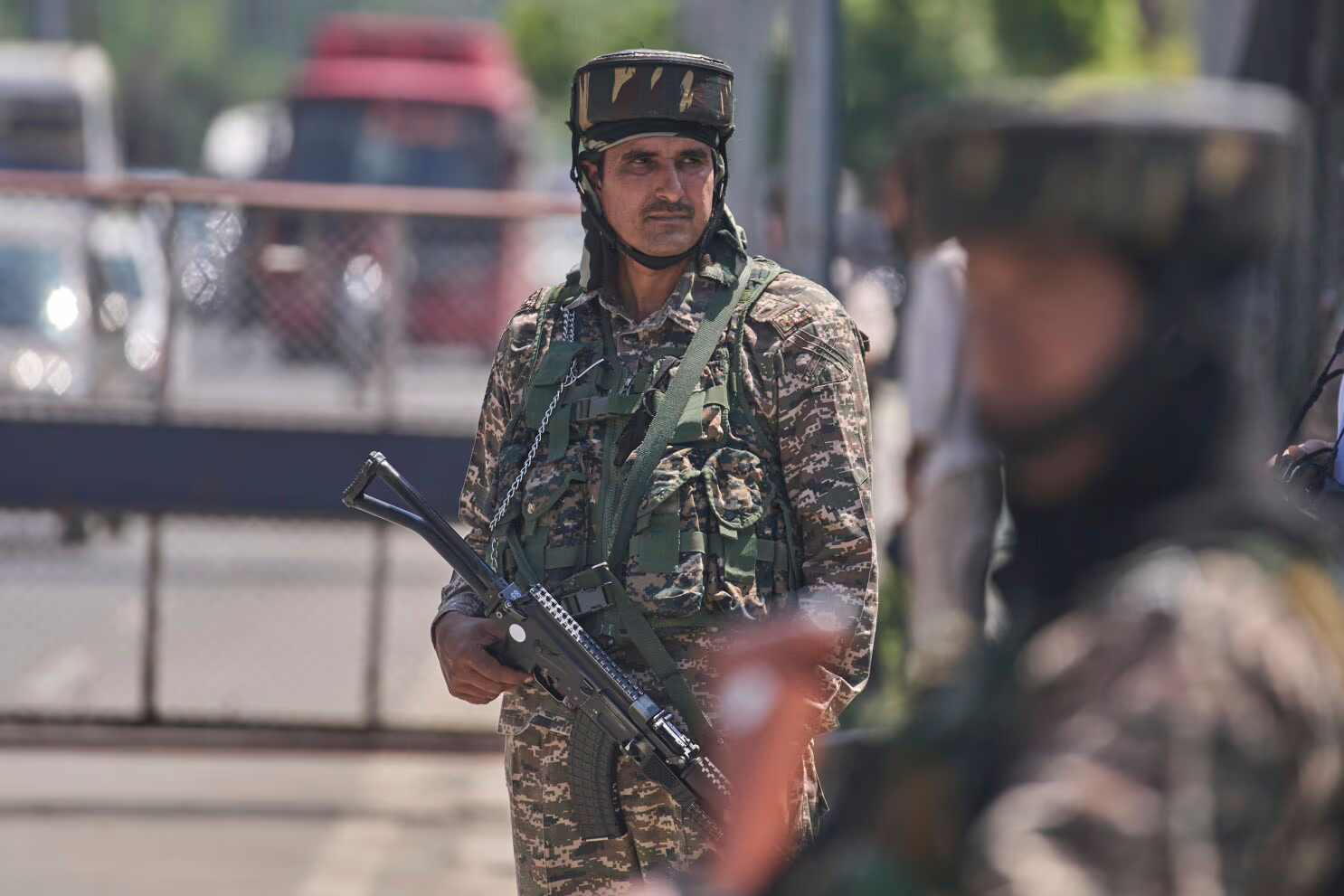
The War That Never Ended
How the Conflict Over Kashmir Became a Fixture of India and Pakistan’s Politics—and Why It Still Can’t Be Stopped?

